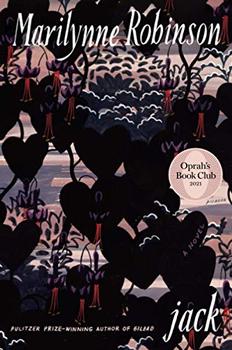Summary | Excerpt | Reading Guide | Reviews | Beyond the Book | Read-Alikes | Genres & Themes | Author Bio

This article relates to Jack
 In Marilynne Robinson's novel Jack, the title character, a white man, meets and falls in love with a Black woman named Della. However, America's racism, segregation and anti-miscegenation laws in the 1950s present a nearly insurmountable obstacle for the couple. One of their specific concerns is how and where they will live together as man and wife. That they live in the deeply segregated city of St. Louis is a significant choice of setting, as it underscores issues of race and segregation in the broader U.S.
In Marilynne Robinson's novel Jack, the title character, a white man, meets and falls in love with a Black woman named Della. However, America's racism, segregation and anti-miscegenation laws in the 1950s present a nearly insurmountable obstacle for the couple. One of their specific concerns is how and where they will live together as man and wife. That they live in the deeply segregated city of St. Louis is a significant choice of setting, as it underscores issues of race and segregation in the broader U.S.
For much of the early 20th century, St. Louis boasted one of the country's largest Black communities. During the first wave of the Great Migration, generally dated from the late 19th century through 1930, many African Americans endeavored to leave the racism of the South for the perceived opportunities of the North. In many cases, and certainly in St. Louis, opportunity was not so easily found. Missouri is in the Midwest, located just north of Arkansas and east of Illinois, but the state had a long history of slaveholding. Upon arrival, African Americans faced many of the same Jim Crow policies that they did in the South. As time went on and St. Louis' population of European immigrants grew, racism against Blacks worsened. Immigrant communities feared that migrating Blacks would take over jobs and disrupt the lives they had worked hard to build in their new country. In 1916, St. Louis passed the first segregated housing law in the U.S., stating that no one could purchase property in a neighborhood where 75 percent of the population or more was made up of another race. (These controversial deed restrictions were ultimately ruled illegal by the Supreme Court in 1948.) In 1917, there was a violent race riot in the city that left 39 African Americans dead, underscoring the very real dangers Black people faced in the city.
When readers of Jack catch up to the title character and his love, Della, the next big push toward segregation and displacement in St. Louis is already underway. As he walks through Della's neighborhood, Jack takes note of all of the buildings that are soon to be demolished. This is a fictionalized moment representing the very real enforcement of the Delmar Divide. Delmar Boulevard runs through the city (dividing it into North St. Louis and South St. Louis) and to this day remains a focal point of segregation in the city.
The demolition and "redevelopment" of Della's neighborhood most likely refers to St. Louis's historic Mill Creek Valley. Once home to Josephine Baker, Mill Creek Valley was a predominantly Black community of 20,000 residents on the south side of the Delmar Divide in the early 1950s. Unfortunately for its residents, the south side was the wrong side of the Divide. In 1951, Missouri governor Forrest Smith declared Mill Creek Valley a health hazard and a slum to be cleared and redeveloped. By demolishing African American communities like the one Della lives in and increasing production of housing blocks in designated Black areas on the north side of the divide, the push toward segregation in St. Louis gained significant momentum.
While de jure segregation has long since disappeared from St. Louis, the effects of those practices are still largely felt in the city. The Delmar Divide still exists, and, in fact, a recent report from the University of St. Louis suggest that everything from access to health, education and income differ greatly depending on which side of the divide you live in. The same report states the following about the long-standing issue of segregation in the city:
A long history of housing segregation remains a significant barrier to prosperity and well-being for many African-Americans and low-income families in our region. But it could be different. It is time for St. Louis to break free of the boundaries that separate us and limit our region's potential.
Mill Creek Valley, date unknown, courtesy of Decoding St. Louis
Filed under Places, Cultures & Identities
![]() This "beyond the book article" relates to Jack. It originally ran in September 2020 and has been updated for the
April 2021 paperback edition.
Go to magazine.
This "beyond the book article" relates to Jack. It originally ran in September 2020 and has been updated for the
April 2021 paperback edition.
Go to magazine.
Your guide toexceptional books
BookBrowse seeks out and recommends the best in contemporary fiction and nonfiction—books that not only engage and entertain but also deepen our understanding of ourselves and the world around us.